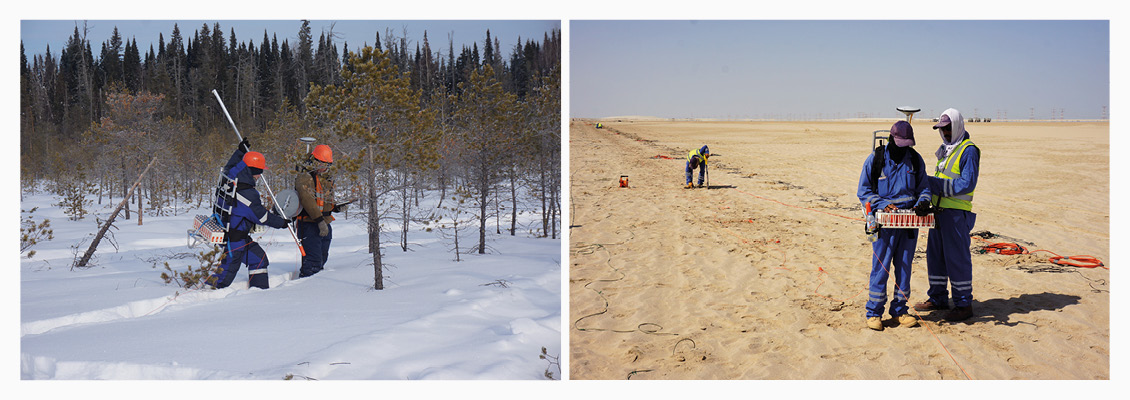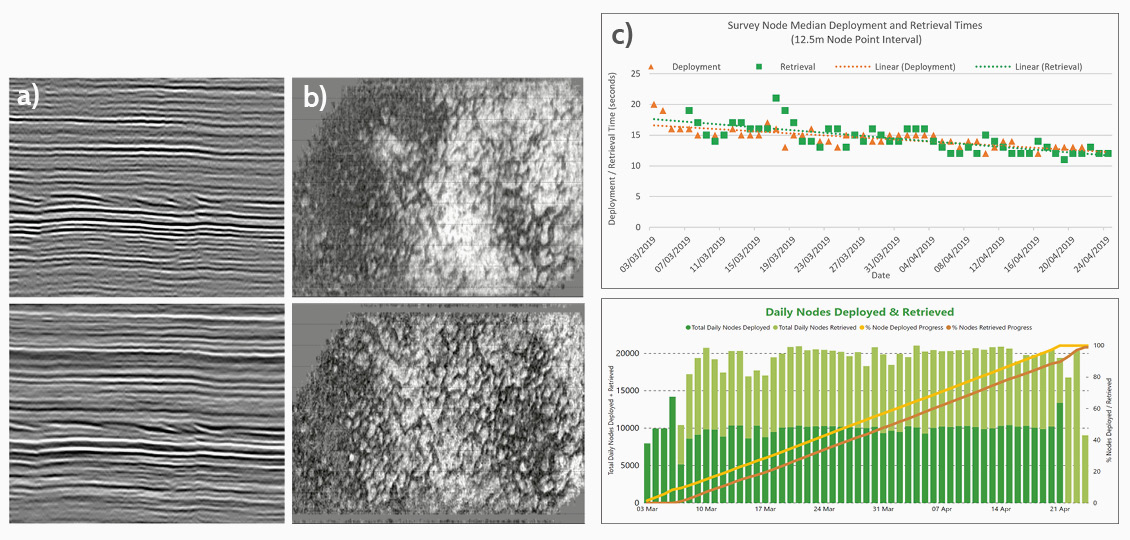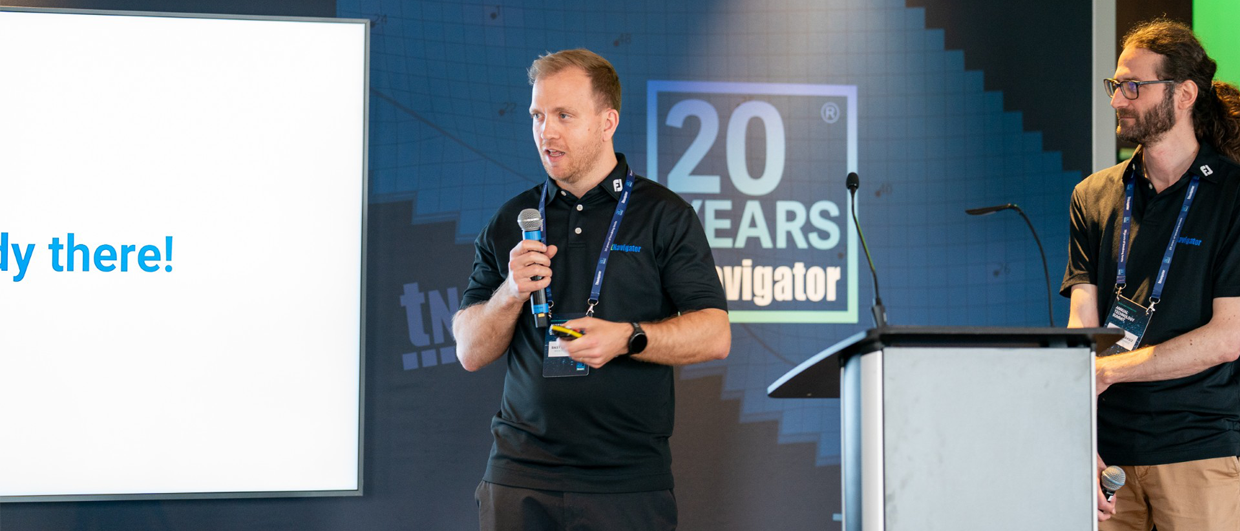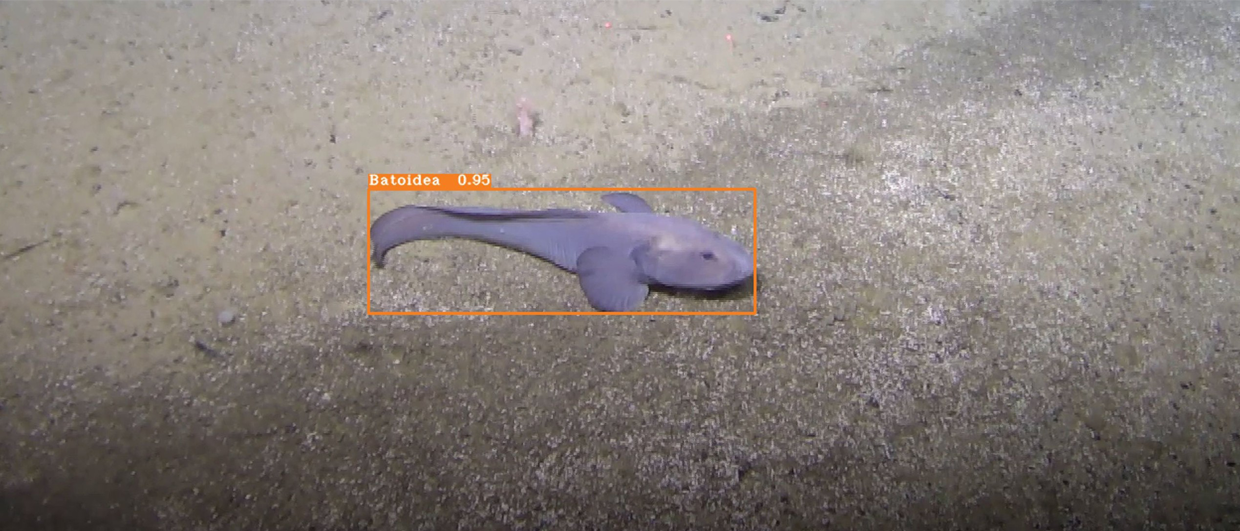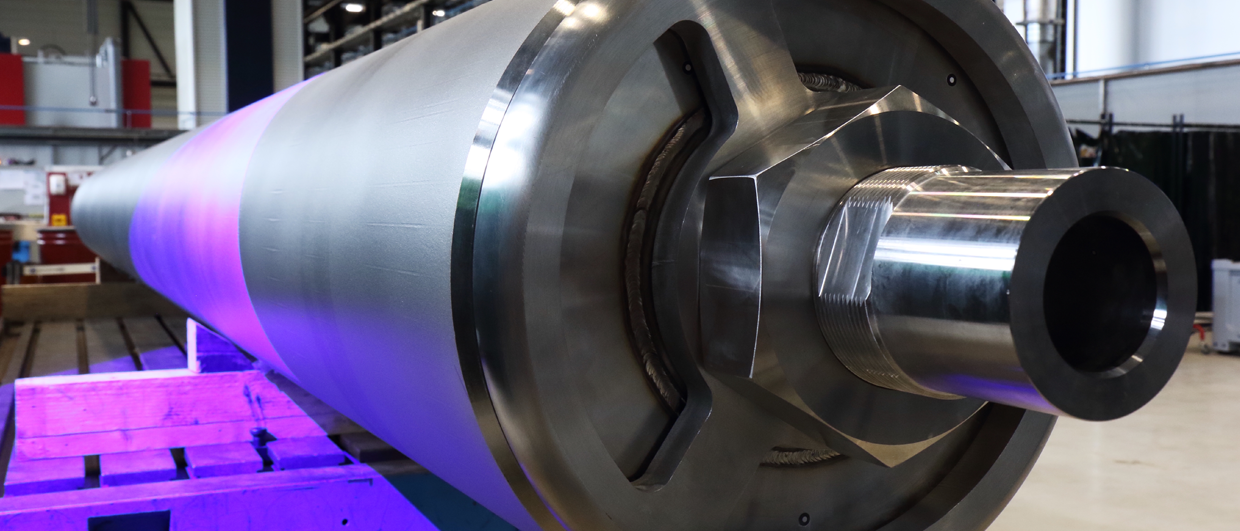Seismic acquisition has seldom seen such challenging times, especially onshore, where we are seeing tighter budgets and tougher environmental restrictions, whilst still requiring denser surveys and a faster turnaround of subsurface information. This situation is affecting all industries looking to acquire seismic with conventional systems.
Cable systems have dominated the seismic acquisition market for many decades, but their bulkiness and cost have limited the receiver density needed to achieve the required image quality, especially in difficult terrains or urban environments. Line preparation for laying the cables, often involving vegetation cutting, a practice that seems so contradictory to today’s environmental values, is often the only solution to move bulky systems around, with their associated safety risk, environmental impact, and cost.
Cable-less autonomous nodes are natural successors for cable systems, and removed some of those constraints, but were still not small, light, and low cost enough to enable them to release their full potential in any terrain at any scale.
The Race for Denser Surveys
Higher trace density seismic surveys have been associated with a better definition of the subsurface for several decades, whether in terms of imaging or seismic attributes which are ultimately linked to rock and fluid properties (Ourabah et al., 2015). Trace density is defined by the number of pair source-receivers per unit of surface and can be increased by either increasing the source or the receiver density. In the last decades, the oil and gas industry has recognized the value of increasing trace density, and seismic surveys of tens of millions of traces per km2 are gradually becoming the norm. This has been achieved by increasing either source efficiency or receiver channel counts to their limits.
If we look at how conventional surveys have evolved to higher densities on the source side in the last few decades, we can see that conventional vibroseis source fleets have been ‘scattered’ and replaced by denser single point sources, often using some flavor of simultaneous shooting schemes, bringing an increased autonomy, and delivering considerable efficiency compared to conventional source fleets (Howe et al., 2008).
The receiver side however, which often uses geophone arrays, or bulky and expensive nodes, has lagged behind, slowing down the survey as they are unable to match the speed of these new, fast-moving sources. The same philosophy needed to be applied to the receiver side. Arrays had to be replaced with independent, single point receivers and distributed on a much denser grid. However, this was difficult to achieve at scale with existing technology, as the sensors had to be smaller, lighter, and sufficiently autonomous to allow this explosion of receiver count to reach its full potential.
Industry Consortia
Fully autonomous nodes seemed to be the natural successor to cable systems in this journey toward denser receiver configurations. Early nodes were too expensive to be used in dense arrangements as they included a significant dead weight, bulky casings, limited autonomy, as well as restricted ability to charge and harvest data from large numbers of nodes simultaneously. The most recent nodal systems showed improvements in size and battery life (Dean et al., 2018) but were still not nimble enough to achieve the vision of an unlimited channel system that could efficiently acquire dense seismic in any environment. To answer this specific challenge, BP, in collaboration with Rosneft and Schlumberger, developed a new nodal system referred to in their publications as the ‘nimble node’ (Manning et al., 2018).
During the development phase, several field trials were performed in different environments and serving different purposes (Figure 2). The main ones being a 2D field trial in in the United Arab Emirates in 2017, comparing this nodal system to three existing commercial cable systems. This trial demonstrated the efficiency of the new system as well as delivering identical seismic quality on a sensor-to-sensor basis (Ourabah et al., 2019). The next trial in 2018, was the first 3D survey with this ‘nimble’ nodal technology and was used in a production survey in West Siberia adjacent to a 12-geophone cable array system, and delivered outstanding data resolution compared to the cable system (Brooks et al., 2018). This field trial not only demonstrated the efficiency and robustness of this nodal system in an extremely cold and forested area but also its potential health, safety and environment, time and cost benefits by reducing line preparation and tree cutting for laying receivers.
World Record
The last trial of the research and development phase was a large-scale 3D field trial completed by ADNOC in the United Arab Emirates in 2019. This was the densest nodal land seismic survey in the world, achieving a staggering 184 million traces per km2 using about 50,000 nodes. Half a million deployments were performed in just over 50 days, where a crew of 36 people deployed and retrieved 10,000 nodes per day at an average speed of 15 seconds per station (12.5m interval). Single operators rotated between 10,000 and 20,000 nodes per day through the containerized cleaning, charging and data harvesting system. Thanks to the density achieved, the seismic delivered a significantly improved resolution at a deep target level (Ourabah and Crosby, 2020) (Figure 3).
Following these successful trials, BP established a new company called STRYDE to bring the nimble node technology to the broader seismic community with the ambition to make high density land seismic accessible to all industries.
Opportunity in a Pandemic
The new company was created in August 2019, a mere six months before the Covid-19 pandemic hit. 2020 was certainly an ’interesting‘ year to introduce a new nodal system to the seismic industry. The upstream oil and gas industry was already going through very difficult times even before the added uncertainty of a global pandemic. This situation did present an opportunity for STRYDE to focus on other industries which were still using seismic but were less impacted by a weak oil price.
Geothermal was one of the first industries outside of oil and gas to understand the benefits of this system. This industry faces the same imaging challenges as oil and gas exploration but suffers from restricted acquisition geometries due to cost and access to urban and semi-urban areas. Smaller, lighter, more discrete nodes were therefore ideal to overcome these challenges, especially in reducing the crew size, which aligned perfectly to the new safety restrictions imposed by the pandemic.
This opportunity allowed STRYDE to adapt its system, which was initially targeting ultra-high-density surveys using several hundreds of thousands of nodes. They designed a new variant called the Nimble System (Figure 4), a modular and compact version for acquiring 2D or small to medium 3D surveys with up to 50,000 nodes. This variant, also used as a demo system, was very easy to ship around the world for trials in America, Europe and Asia and was typically tested against other nodal systems. These trials have delivered superior operational results and equivalent or better images of the subsurface. Before the company’s first anniversary, the system had already been used for four geothermal surveys in France, Belgium, and Switzerland, as well as mineral exploration, seismic risk, micro-seismic and even archaeological surveys. STRYDE has also taken the opportunity during 2020 to collaborate with universities looking at using low-cost sensors for passive seismic and motion studies.
The company and its clients have successfully embraced remote support when traveling was restricted due to Covid- 19, highlighting the importance of making this nodal system simple and intuitive to use. Oil and gas seismic projects have since started resurfacing and at the present time, more than 170,000 STRYDE nodes are used across various industries.
Energy Transition
Industries critical to the energy transition, such as geothermal, carbon capture, helium and hydrogen storage and exploration, are expected to play a key role in the new low carbon world. They will need access to the best quality subsurface information in order to achieve their goals and with the focus on renewable energies, this new nodal system will surely have a part to play.
References
- Brooks, C., Ourabah, A., Crosby, A., Manning, T., Naranjo, J., Ablyazina, D., Zhuzhel, V., Holst, E. and Husom, V. 2018. 3D field trial using a new nimble node: West Siberia, Russia. SEG Technical Program, Expanded Abstracts, pp.6–10.
- Dean T., Tulett, J. and Barnwell, R. 2018. Nodal land seismic acquisition: The next generation. First Break 36, pp.47–52.
- Howe, D., Foster, M., Allen, T., Taylor, B. and Jack, I. 2008. Independent Simultaneous Sweeping – a method to increase the productivity of land seismic crews. SEG Annual Meeting, Technical Program Expanded Abstracts 2008, pp.2826 2830.
- Manning, T., Brooks, C., Ourabah, A., Crosby, A., Popham, M., Ablyazina, D., Zhuzhel, V., Holst, E. and Goujon, N. 2018. The case for a nimble node, towards a new land seismic receiver system with unlimited channels. SEG Technical Program, Expanded Abstracts, pp.21–25.
- Ourabah, A., Crosby, A., Brooks, C., Manning, T., Lythgoe, K., Ablyazina, D., Zhuzhel, V., Holst, E. and Knutsen, T. 2019. A comparative field trial of a new nimble node and cabled systems in a desert environment. 81st Conference and Exhibition, EAGE, Expanded Abstracts.
- Ourabah, A., Bradley, J., Hance, T., Kowalczyk-Kedzierska, M., Grimshaw, M. and Murray, E. 2015. Impact of acquisition geometry on AVO/AVOA attributes quality: A decimation study onshore Jordan. 77th Conference and Exhibition, EAGE, Extended Abstracts.
- Ourabah, A. and Crosby, A. 2020. A 184 million traces per km2 seismic survey with nodes: Acquisition and processing. SEG International Exposition and 90th Annual Meeting, Extended Abstracts.



